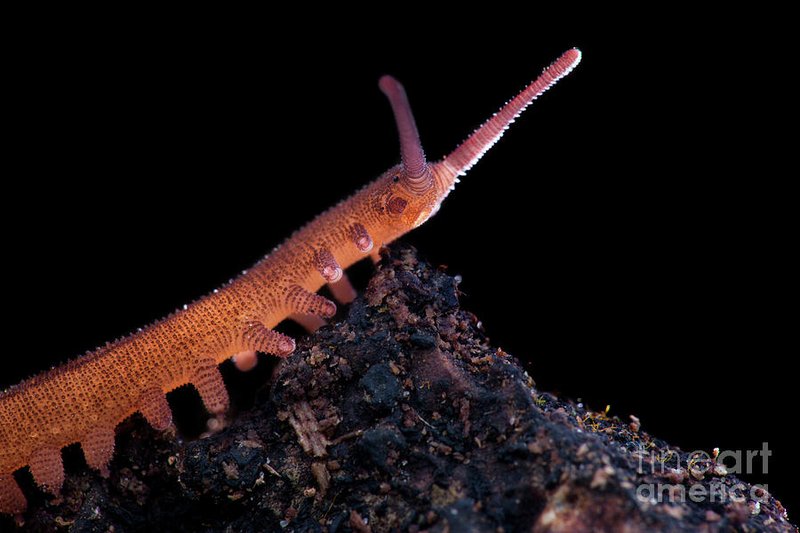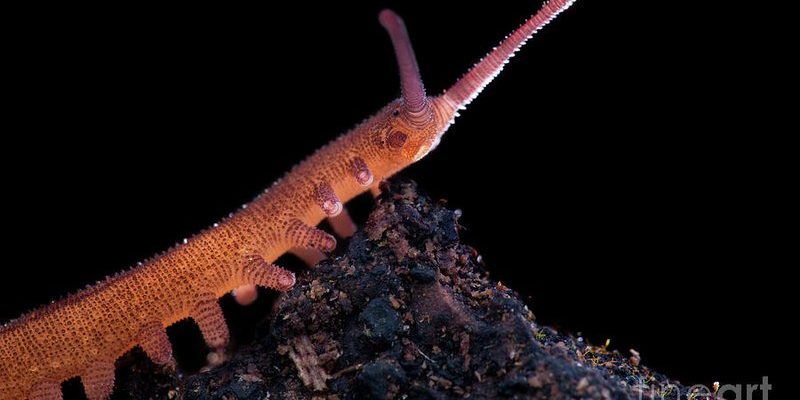
Documenting velvet worm populations is like being an explorer in your backyard or local forest. By joining in on this effort, you’re not only helping scientists gather important data but also learning about a unique part of our biodiversity. So, grab your notebook and let’s dive into how you can contribute to this essential work—because every bit of data counts!
What Are Velvet Worms?
Velvet worms, or Onychophora, are fascinating little creatures that look like a mix of a worm and a caterpillar. They’re soft-bodied and covered in tiny hairs, giving them a velvety appearance (hence the name). These critters are typically found in warm, moist environments, which is why you might notice them lurking in leaf litter or under stones.
You might be wondering about their lifestyle. Velvet worms are predators, using unique slime to capture their prey. They can squirt this slime up to several inches away, which is pretty impressive! Think of them as the ninjas of the forest floor, stealthily hunting small insects. Understanding their behavior and population size helps conservationists monitor the health of their ecosystems.
Why Document Velvet Worm Populations?
So, why is it important to document velvet worm populations? Well, tracking their numbers helps scientists understand broader ecological trends. Since these worms are sensitive to environmental changes, they can be indicators of ecosystem health. If their populations decline, it can signal issues like habitat loss or climate change.
Additionally, gathering data on these creatures through citizen science initiatives helps build a comprehensive picture of their distribution. This is crucial for conservation efforts. By knowing where velvet worms thrive, we can prioritize these areas for protection, ensuring their survival for future generations. Plus, getting involved allows regular folks to contribute to science in meaningful ways.
How Can You Get Involved?
Getting involved in documenting velvet worm populations is easier than you might think! Here’s how you can start:
1. **Join a Local Citizen Science Project**: Many organizations run projects focused on velvet worms. Check for programs in your area, or look online for resources.
2. **Use Identification Guides**: Equip yourself with guides that help you identify different species of velvet worms. This knowledge will make your observations more effective.
3. **Participate in Workshops**: Workshops often provide training on how to collect data accurately. You’ll also connect with other enthusiasts who share your interest.
Remember, documenting doesn’t mean you need to be a biology expert. Every observation contributes!
Tools and Resources for Documentation
Now that you’re ready to jump in, let’s talk about the tools and resources that can make your documenting experience smoother:
– **Field Notebooks**: Keep a dedicated notebook for your observations. Write down the conditions (like temperature and humidity), location, and number of velvet worms you spot.
– **Mobile Apps**: Consider downloading apps geared towards citizen science. They often provide easy ways to log and share your findings with researchers.
– **Photography Equipment**: If you can, capture photos of the velvet worms you find. Images can help with identification and documentation.
By utilizing these tools, you’ll help provide accurate data that researchers can rely on to assess the health of these populations.
Common Challenges in Documenting Velvet Worms
Every adventure has its hurdles, and documenting velvet worm populations is no different. Here are some challenges you might face:
– **Identification Confusion**: There are many species of velvet worms, and distinguishing between them can be tricky. Using identification guides and joining online forums can help clarify any doubts.
– **Finding Them**: Velvet worms often hide in damp, dark places. Patience is key! Look under rocks or logs, and don’t get discouraged if you don’t spot many at first.
– **Environmental Factors**: Weather conditions can impact your findings. Heavy rainfall can wash them away, while dry spells can make them less active. Plan your observations around favorable conditions.
Being aware of these challenges helps you approach your documentation with realistic expectations.
Benefits of Participating in Citizen Science
Participating in citizen science initiatives, especially for documenting velvet worm populations, comes with several rewards. Here are just a few:
– **Learn About Nature**: You’ll develop a deeper appreciation for local ecosystems as you learn more about these remarkable creatures and their habitats.
– **Meet Like-Minded People**: Engaging in these projects could introduce you to other nature lovers and enthusiasts. Sharing experiences can make your journey even richer.
– **Make a Difference**: Your contributions can help shape conservation efforts. It feels good to know that you’re part of something bigger, right?
Documenting velvet worms not only enhances your skills but also empowers you to be a steward of nature.
Wrapping It Up
Documenting velvet worm populations is a rewarding and impactful way to get involved in citizen science. By using the right tools, understanding the importance of these creatures, and overcoming any challenges, you can contribute valuable data that aids in conservation efforts.
So, the next time you’re out exploring, keep an eye out for these fascinating little beings. Remember, every observation matters. You’re not just a casual observer—you’re a vital part of the scientific community, helping to pave the way for a healthier planet. Let’s celebrate the quirky and essential velvet worms together, one observation at a time!

